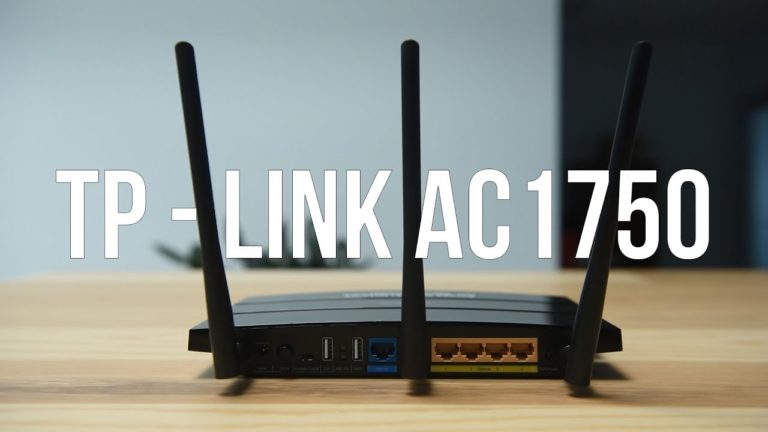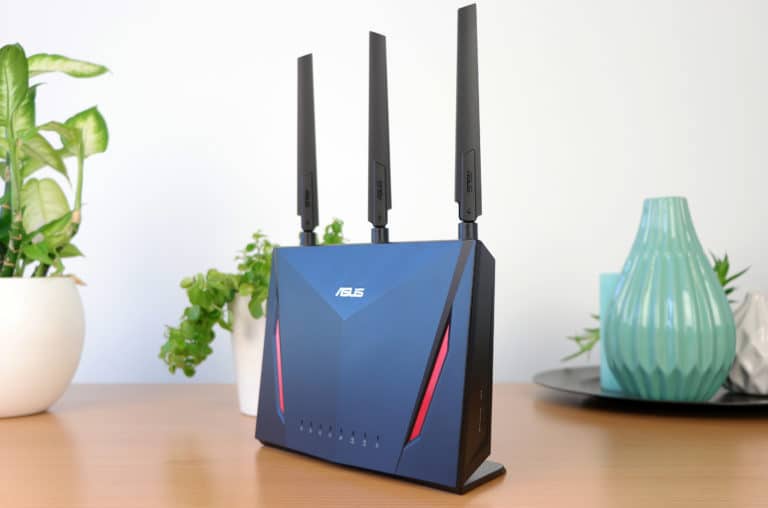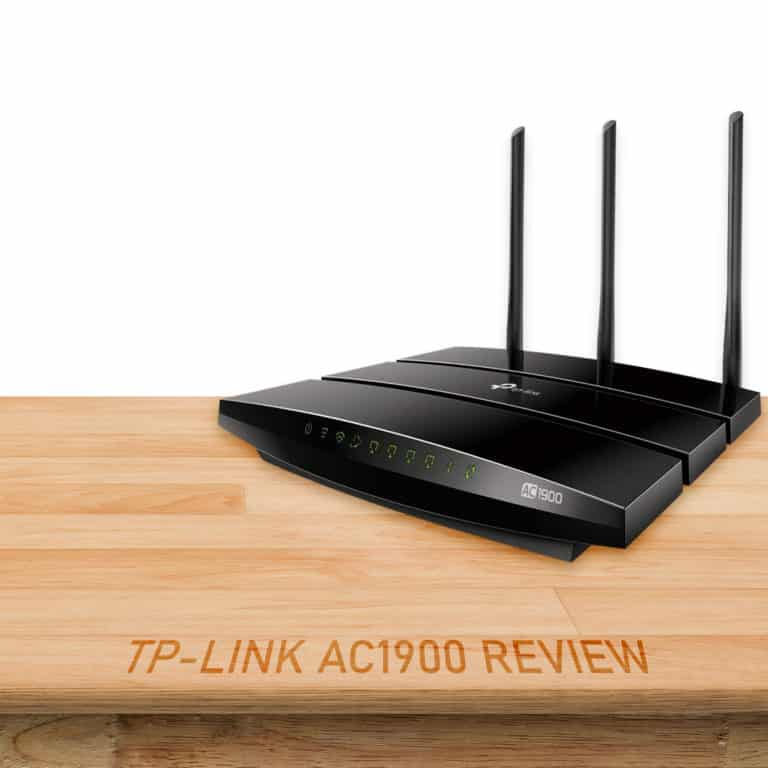AC1750 vs AC1900: Pros & Cons and Final Verdict
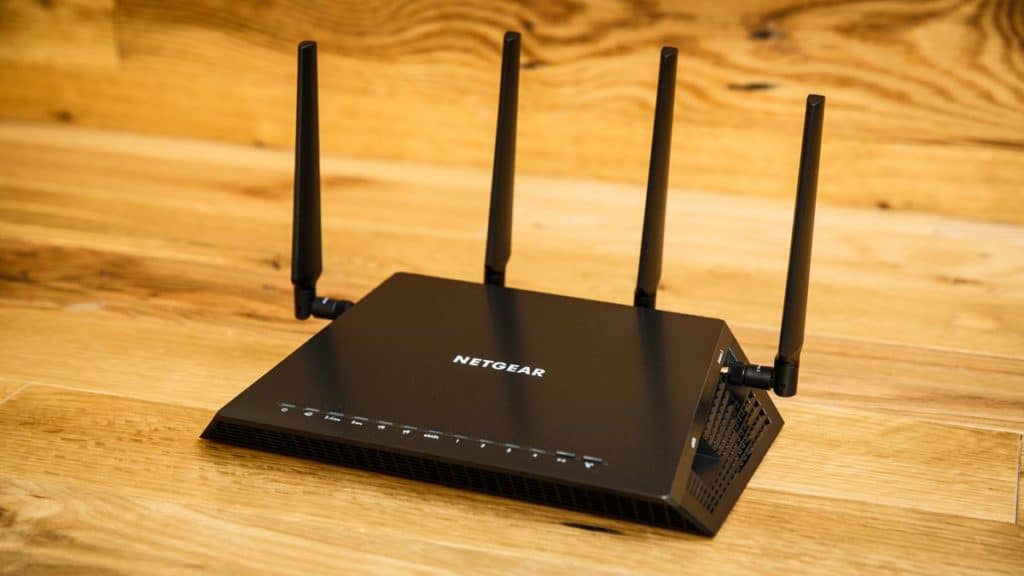
With so many great routers, it’s no surprise that AC1750 and AC1900 are two of the most popular router types on the market today. Both offer advanced speeds, good reliability, and a solid set of features.
The AC1900 has a higher transfer speed than the AC1750, which is better when transferring large files quickly. So if you plan on transferring huge amounts of data very frequently, then the AC1900 router is what you should probably be looking for.
Making the choice between the two can be quite difficult for some users, many of whom don’t even fully understand the core differences between the routers.
If you’re looking to purchase a modern wireless router, chances are you’re going to be seeing the letters AC quite often. Followed by these letters is a number, such as AC1300, AC1750, AC1900, AC3100, all the way up to AC5400.
Companies usually don’t bother to explain what these letters and numbers mean or do so only glancingly.
First, let’s start with the letters AC. Having AC in its name simply means that a wireless router supports the latest 802.11ac Networking standard. Almost all modern routers have support for this; the few that don’t have the letter N in their name in place of the AC, denote their use of the older networking standard.
Now that we know what AC means, what about the numbers following AC? These numbers represent the maximum theoretical bandwidth that the router possesses. AC3200 means the router provides wireless networks using the 802.11ac standard and possesses a total theoretical bandwidth of 3200 Mbps.
So, the higher the number listed, the higher speeds the router is capable of, right? Not exactly. Although the numbers following the “AC” in a router’s name are used to designate speed capabilities, these speeds are split up amongst two or even three signals.
Most routers are dual-band, meaning they produce two separate signals, one 5 GHz signal and one 2.4 GHZ signal. Some companies, however, have begun making tri-band routers.
These tri-band routers are the routers with the highest total maximum theoretical bandwidth (anytime you see a number above 3000, you know you’re dealing with a tri-band router).
However, these speeds are split up amongst all three bands. The first 5 GHz band possesses a maximum bandwidth of 1,300 Mbps, the second 5Ghz band is capable of 1,300, and the 2.4 GHz band is capable of 600.
Adding each of these three bands together gives you the total theoretical bandwidth of the router. 1,300 + 1,300 + 600 = 3200. While it is sounds good to say that an AC3200 router is capable of producing speeds of 3200 Mbps, it is not exactly true.
While the extra band is definitely useful for handling excessive amounts of traffic, it does nothing to add to the speeds available at any given time. The actual maximum speed an AC3200 router could produce on a single network is 1,300 Mbps.
Two of the most popular router options on the market today, are AC1750 routers and AC1900 routers. Both of these are dual-band routers that offer up to 1,300 Mbps on their one 5 GHz bands.
On their 2.4 GHz bands, the AC1900 router can produce speeds up to 600 Mbps and the AC1750 is capable of 450 Mbps, totaling 1,900 (1,300 + 600) and 1,750 Mbps (1,300 + 450) respectively. Today we’re going to see how these two routers stack up against one another.
Table of Contents
1. How We Tested
To test the two, we purchased several of the most popular AC1750 and several of the most popular AC1900 routers on the market today. We went through the setup and installation process, putting ourselves in the shoes of the average user while also keeping more advanced users in mind.
After setup, we tested the speeds and consistency by connecting a device to each of the new networks and measuring the speeds at different distances from the routers.
While there was a variance between the different brands and products, in terms of pure speed, there wasn’t much difference between the AC1750 and the AC1900 routers. After all, both routers offer speeds up to 1,300 Mbps on the main 5 GHz band.
While we didn’t get speeds anywhere near that high (those are the highest possible speeds under laboratory conditions) both the AC1750 and AC1900 routers performed quite impressively in our speed tests, both clocking averages of over 400 Mbps at around 5 feet from the router.
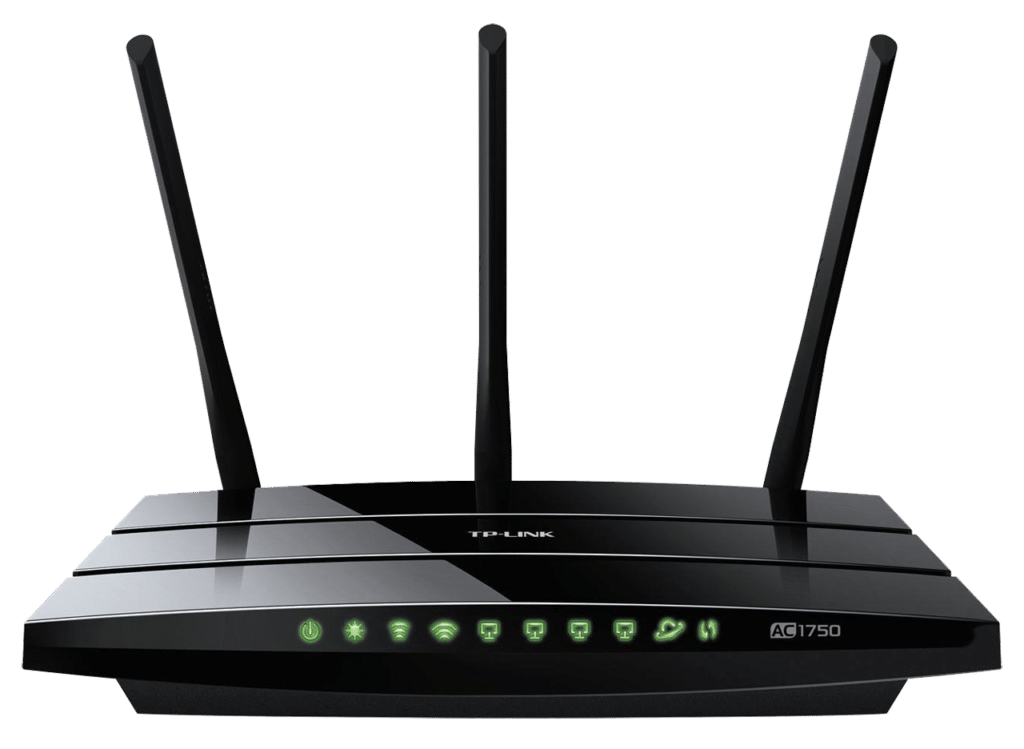
BUDGET PICK: TP-LINK ARCHER A7 (AC175)
The TP-Link AC1750 Archer A7 is a great option for users with smaller homes or apartments. As long as you don’t get too far away from the router or try to connect too many devices, this router is more than capable of providing super-fast WiFi.
As you might expect, the biggest difference between the two came when testing the 2.4 GHz band.
The AC1900 routers had a pretty big advantage in this regard. If you have a lot of outdated devices that are incompatible with the newer 5 GHz networks or plan on connecting several devices at once that take up a lot of bandwidth—4k TVs or high-powered gaming systems, for example—an AC1900 router will probably be the choice for you.
2. Similarities and Differences
AC1750 Routers
Upon their launch in 2012, AC1750 routers were an innovation in WiFi systems. Advancing beyond the N network standard, AC1750 routers use the 802.11ac standard, offering their users much higher speeds and dependability.
Perhaps the biggest attribute of the AC 1750 routers is their dual-band capabilities. While some routers in the past only offered one 2.4 GHz band, these AC1750 routers offer a 2.4 GHz band for your older devices to connect to, and a more powerful 5 GHz band for newer, more demanding devices.
Despite having been around for a long time, these routers are still widely used today. They might not be the most modern WiFi routers on the market today, but they’re still very powerful and can handle the average user’s needs with ease.
The one area in which the AC1750 falls behind is that, while it does utilize dual-band technology, its second band, the 2.4 GHz, is not quite as strong as the AC1900. Users who plan to connect multiple demanding devices to the network at once may experience drops in available speeds.
The main area in which AC1750 routers shine is their affordability. With so many upgraded versions of these routers on the market today—faster AC models as well as the new “mesh” WiFi systems—AC1750 routers are usually quite affordable, making them the perfect option for users on a budget.
Netgear R6700 Nighthawk AC1750
It’s impossible to talk about AC1750 routers and not mention the NETGEAR R6700 Nighthawk. NETGEAR is in a league of its own. The company has been producing some of the fastest routers on the market for years, and the AC1750 is no exception.
Featuring a 1GHz dual-core processor and USB 3.O port for fast HDD access, the NETGEAR R6700 is the most powerful router of its class. The Netgear Nighthawk was the highest performing of the AC1750 routers in our speed tests, giving us average speeds of 433 Mbps at about 5 feet from the router.
| NETGEAR R6700 (AC1750) Features |
|---|
| 1. Dual-Band WiFi Router |
| 2. 1,300 Mbps capable 5 GHz band + 450 Mbps capable 2.4 GHz band |
| 3. USB 3.0 Port for Fast Access to USB HDD |
| 4. Parental Controls Allow You to Manage Internet-Access and Screen-Time, While Letting You Filter Content |
| 5. Beamforming Allows Signals to be Strengthened and Spread Throughout Your Home |
| 6. 256MB RAM and 128MB Flash |
| 7. Prioritized Bandwidth for Lag-Free Gaming/Streaming |
Those speeds held up relatively well until we got 25-30 feet from the router, at which point our speeds dropped to around 280 Mbps. We were impressed with the router’s speed, as well as its ability to hold up over distance.
The only downside to this router is that it doesn’t have an exceedingly rich feature set.
Overall, this product from NETGEAR offers exceptional performance at a great price, making it the go-to option for any budget user looking to get exceptionally fast WiFi.

RUNNER-UP: Netgear R6700 (ac1750)
The Netgear Nighthawk was the highest performing of the AC1750 routers in our speed tests, giving us average speeds of 433 Mbps at about 5 feet from the router.
Archer A7 AC1750 Smart Router
While most AC1750 routers are already quite affordable compared with newer options, the TP-Link Archer A7 might be the most affordable option on the market today, having won awards for its outstanding value.
The downside to this system, however, is that it doesn’t support Beamforming. Beamforming is a feature that speeds up your network while also spreading it throughout your home. The lack of this feature really hurts the TP-Link Archer A7’s performance.
| Archer A7 (AC1750) Features |
|---|
| 1. Dual-Band Router |
| 2. 1,300 Mbps-Capable 5 GHz Band + 450 Mbps-Capable 2.4 GHz band |
| 3. Compatible with Amazon Echo/Alexa |
| 4. 4 Gigaport LAN ports |
| 5. Integrated USB Port Allows for Easy Content-Sharing |
| 6. TP-Link Tether App Allows for Effortless Setup and Management |
| 7. 2 Year Warranty |
The router did relatively well in our close-range tests, giving us average speeds of 295 Mbps at about 5 feet from the router. When we moved farther away, however, the speeds fell significantly. At about 25 feet, we measured just over 110 Mbps, making it one of the worst-performing routers at distance.
Despite this, the TP-Link AC1750 we reviewed (Archer A7) is a great option for users with smaller homes or apartments. As long as you don’t get too far away from the router or try to connect too many devices, this router is more than capable of providing super-fast WiFi.
The TP-Link Archer A7 is also very easy to configure. Everything is handled with an easy-to-use app and requires no tech-savvy.
Although it’s performance and feature-set are both lacking compared to its competitors, the TP-Link Archer A7’s nice price tag makes it a great option for users with more basic needs.
Asus RT AC-66 U
The Asus RT AC-66 U is one of the more expensive options on the market today. You get what you pay for. The Asus proved to be one of the fastest routers we tested, measuring about 400 Mbps at close range.
It also supports Beamforming, which allowed us to maintain undiminished WiFi speeds even at a distance. At about 30 feet from the router, we were still measuring an average of about 280 Mbps.
This was definitely one of the most impressive AC1750 routers we tested. The 2.4 GHz band didn’t perform quite as well in our testing, but neither did it embarrass itself.
| ASUS RT AC-66 (AC1750) Features |
|---|
| 1. Dual-Band WiFi Router |
| 2. 5 GHz Band Capable of 1,300 Mbps + 2.4 GHz Band Capable of 450 Mbps |
| 3. 5th Generation 802.11ac Chipset |
| 4. ASUS AICloud access gives you unlimited storage |
| 5. Attractive design |
| 6. Beamforming allows signals to be strengthened and spread throughout your home |
| 7. 4 LAN Ports |
| 8. 1 WAN Port |
One of the best things about the Asus RT AC-66 U is its stylish design. While not as minimalistic or modern as the newest WiFi systems currently on the market, the Asus is the best looking of the AC1750 routers. The design is also physically convenient.
The router can be mounted on a wall or can stand upright or on its side. All of this, combined with numerous features such as four LAN ports, one WAN port, and Cloud-Storage capabilities, makes the Asus RT-66 U a great option for anybody looking for a high-end WiFi router.
Although it isn’t cheap compared to other AC1750 routers, for those who can afford it, the price is well worth it.
The only downside to this router: the setup was difficult. If you have a basic knowledge of computers, the configuration should be easy enough to figure out. On the other hand, technologically challenged users, especially the elderly, could really struggle.
AC1900 Routers
In terms of peak performance, the AC1900 routers managed to barely outperform their predecessors. The major difference, however, was the improved 2.4 GHz network. Where the AC1750 routers’ performances worsened when we switched to their secondary band, the AC1900 routers held up much better.
Their performance still dropped, but not significantly. We also saw a big upgrade in the number of features. Companies took it upon themselves to outfit these newer systems with more bells and whistles than the older AC1750 models.
NETGEAR Nighthawk R7000 Dual-Band AC1900 Router
The Netgear Nighthawk R7000 provides users with blistering WiFi speeds and solid reliability.
Like the older Nighthawk R6700, This NETGEAR router was the highest performing unit in its class, giving us the fastest speeds of all. At close range, connected to the 5 GHz signal, we measured an average of 477 Mbps, a slight improvement over the AC1750 model.
This improvement probably has a lot to do with the Nighthawk’s upgraded antennas; In our full AC1900 review of the Nighthawk router we talked about its solidly built exterior, with larger antennas to spread the signals farther, and a heavier base that gives the router an overall nicer feel.
| NETGEAR NIGHTHAWK R7000 (AC1900) Features |
|---|
| 1. Dual-Band WiFi Router |
| 2. 1,300 Mbps Capable 5 GHz Band + 600 Mbps Capable 2.4 GHz Band |
| 3. 1GHz Dual Core Processor |
| 4. Beamforming Allows Signals to be Strengthened and Spread Throughout Your Home |
| 5. USB 3.0 Port Allows Fast HDD Access |
| 6. Prioritized Bandwidth Allows for Lag-Free Gaming/Streaming |
| 7. 128 MB of Flash Memory and 256 MB RAM |
| 8. Amazon Echo Compatible |
| 9. Time Machine Compatible |
| 10. VPN |
The most significant improvement, however, was the 2.4 GHz band. Unlike the AC1900 routers, even when we were connected to the weaker band, the NETGEAR Nighthawk’s strong WiFi signal held up wonderfully.
Aside from the performance upgrades, NETGEAR also added a ton of features, perhaps the most significant of which is the ability to link the WiFi system with the Amazon Echo.
Users that own the virtual Home-Assistant device will be able to control their network settings using voice commands. NETGEAR also added VPN capabilities, allowing you to surf the web safely and anonymously.
The NETGEAR Nighthawk R7000 gives you lightning-fast speeds over large areas, while also giving you access to a ton of convenient features. This is a great option for anybody looking to get the most out of their home WiFi. The only downside is the steep price tag.
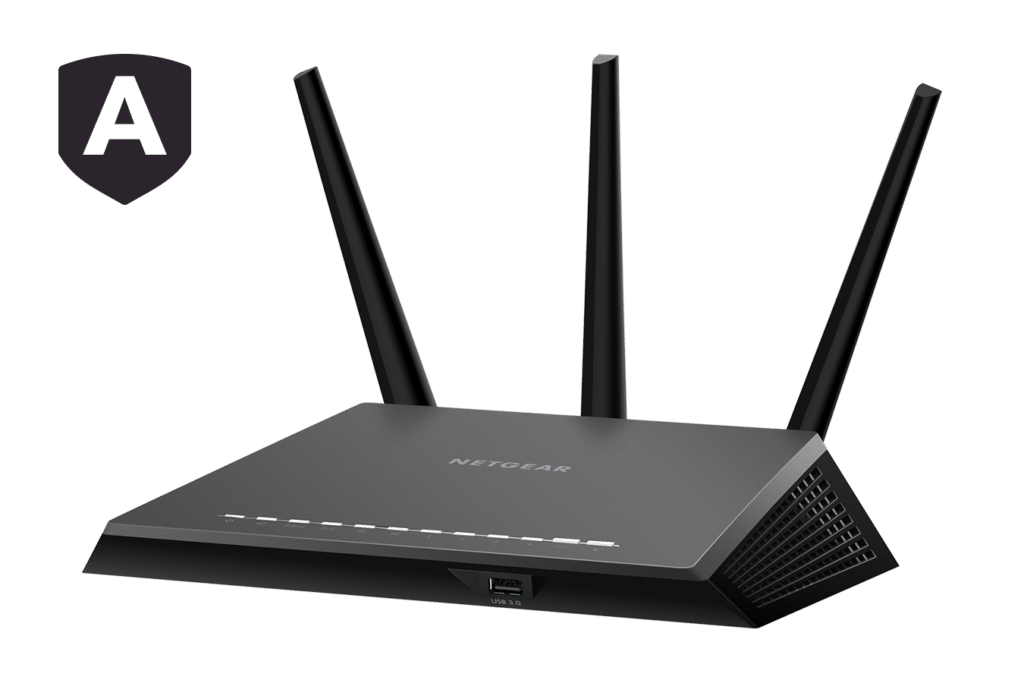
Our Pick: Netgear R7000 (AC1900)
Aside from the performance upgrades, NETGEAR also added a ton of features, perhaps the most significant of which is the ability to link the WiFi system with the Amazon Echo.
Linksys AC1900 Dual Band Wireless Router
Although the NETGEAR Nighthawk performed the best, the Linksys EA7500 AC1900 wasn’t far behind. Connected to the 5 GHz network, from 5-10 feet away, we got an average speed of 457 Mbps. Perhaps even more impressive, the Linksys AC1900 had an outstanding range.
At 30 feet from the router, we consistently measured speeds of over 325 Mbps, making the Linksys the most consistent router we tested. Linksys EA7500 AC1900 one of the more attractive routers on the market, featuring a nice retro design.
| LINKSYS EA7500 (AC1900) ROUTER Features |
|---|
| 1. Dual Band WiFi Router |
| 2. 1,300 Mbps Capable 5 GHz Band + 600 Mbps Capable 2.4 GHz Band |
| 3. 1.2 GHz Dual-Core Processor |
| 4. 128 MB Flash Storage and 256 MB RAM |
| 5. Four Gigabit LAN Ports |
| 6. One Gigabit WAN |
| 7. USB 3.0 Allows Fast HDD Access |
| 8. USB 2.0 |
| 9. MU-MIMO Capabilities |
The only downside to the Linksys is that it’s quite a bit larger than other WiFi routers on the market (if you’re trying to save space, you should look elsewhere), and the setup was a bit difficult and time-consuming.
Although the customization offered here is great for advanced users, the technologically-disinclined may struggle.
3. Alternatives
AC3000/Mesh Smart WiFi Systems
Although more expensive than traditional WiFi routers, “mesh” WiFi systems come equipped with one main router and multiple satellite units. These units link together to create a “mesh” of WiFi signals for your devices to connect to.
This eliminates WiFi “dead zones” in even the largest of homes. These are the absolute best, most advanced WiFi systems on the market today, and although they are expensive, they’re a must-have for users trying to blanket a very large area in high-quality uninterrupted WiFi.
The most popular and trusted of these systems are the NETGEAR Orbi AC300, and the Google WiFi systems, while the title of most power goes to the Eero Pro WiFi system.

ALTERNATIVE PICK: EERO PRO WIFI SYSTEM
The Amazon eero Pro mesh WiFi system (3 eero Pros) replaces the traditional WiFi router, WiFi extender, and internet booster by covering a 5+ bedroom home with fast and reliable internet powered by a mesh network.
Who Should Get This?
AC1750
AC1750 WiFi routers are the perfect choice for users looking for fast, dependable WiFi on a budget. In our tests, the AC1750 routers proved to have a strong 5 GHz signal, but their 2.4 GHz signal struggled to provide consistent speeds.
Since the 2.4 GHz networks is mainly used for backup in case the 5 GHz signal becomes crowded, users who plan to simultaneously use numerous devices that take up large amounts of bandwidth may want to spend the extra money to get an AC1900 with a faster 2.4 GHz band.
If, however, you plan to only use a few devices at a time, an AC1750 router will be more than powerful enough to give you quality WiFi, without breaking the bank.
AC1900
While slightly more expensive than AC1750 routers, the newer AC1900 routers usually come equipped with more features, more advanced hardware, and, of course, faster speeds.
While the speed difference isn’t huge when it comes to the 5 GHz band, the much faster 2.4 GHz band is great for users who need to support multiple devices.
AC1900 WiFi routers are an improved version of AC1750. When comparing products of the same brand, the AC1900 is superior in every regard except price.
Whether or not your willing to pay a slightly higher price for the added speeds and features will depend on your specific Internet needs. If you have a large family, want to support multiple 4K TVs and powerful gaming consoles, or want the most out of your WiFi router, an AC1900 router is a perfect choice for you.
Our Pick
The AC1750 and the newer AC1900 have a lot in common. There are a ton of great and affordable routers available at both options. As long as you make an informed decision based on your needs, either will work just fine.
With that being said, the AC1900 is unquestionably the faster, more reliable router, and if budget isn’t a big concern, it wins hands-down.
Even taking budget into consideration, the price difference between the two isn’t as great as the difference in reliability and the disparity of features.
Our Pick: AC1900
Although the AC1750 can be great for users looking to save money while still getting powerful, capable WiFi, the newer AC1900 models are also relatively inexpensive and outperform their predecessors in every category.
A slightly faster 5 GHz signal, much faster 2.4 GHz signal, added features and improved aesthetics, make the AC1900 routers our pick.


